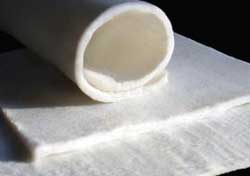
Aerogels - Slimline Acoustic Treatment?
Share

The manufacturers of aerogels have hailed it as a space age material that is super light and yet posseses superior thermal and acoustic absorption properties compared to acoustic foam. When we first found out about aerogels we too were impressed by the said capabilities of this wonder material. We were intrigued and wondered if this was the future of studio acoustics and acoustic treatment.
A Cabot sales representative of one of the companies that makes the aerogels into wraps even boldly stated.
[blockquote class="{classname}"]…. aerogel absorbs sounds very well and has good impedance match with sound waves so it reflects very little sound. The structure of the Aerogel also creates a torturous path for the sound to travel though it once inside, resulting in a slowing down of the speed of sound from roughly 350 meters per second to around 100 meters per second. This reduction in speed reduces the amplitude of the sound.
The porous structure of aerogel will reduce the transmission of airborne sound waves through either reflection or absorption. Acoustic insulating properties can be particularly notable at lower frequencies (< 500Hz).[/blockquote]
Indeed a wonder substance you would think, so did we! At 200 quid a meter we set about obtaining a sample of this material and had it acoustically tested to prove if this was really the next big thing in acoustic treatment.
We’ve had the results back in and surprise surprise. An 8mm thick blanket of this stuff is pretty much transparent to sound frequencies below 500Hz talk about them being “particularly notable at lower frequencies (<500Hz)” . Even above 500Hz one only starts to see a significant change in absorption coefficient at 5000Hz where the aerogel’s absorption coefficient comes in at a decent .74.
It appears the huge discrepancy between the claimed and actual results is due to the method of converting the substance into a practical useable format. Aerogels are mainly available for sale as granules and wraps. The wrap which is what we tested basically constists of a fine polyester material infused with aerogel granules. The fact that the granules are not tightly packed in the material would theoretically have an effect on the absorption properties observed. Perharps in future solid aerogel panels will be readily available and maybe then would we have an acoustic product that is a practical solution for interior acoustics.
Conclusion
We carried out this test to answer the thousands of questions out there about the performance of aerogels and their application in acoustic treatment products for studios. The results show that if you are looking for a material to absorb high frequencies >5000Hz and have enough money in the bank then this is for you. Otherwise stay clear of the “Hype” (No pun intended) and leave this stuff for thermal insulation which we understand it is even more effective at. If the acoustic properties are anything to go by then we know what this means.
Find out more about aerogels and the nanotechnology used to create them here.